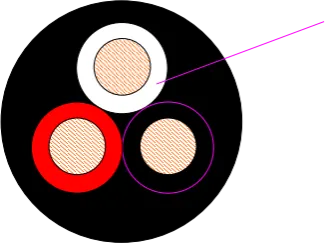des. . 05, 2024 14:45 Back to list
control valve
The Importance of Control Valves in Industrial Applications
Control valves play a crucial role in various industrial applications by regulating the flow, pressure, and temperature of fluids within a system. Their primary function is to maintain desired operating conditions within equipment and processes, ensuring optimal performance and safety. This article will explore the intricacies of control valves, their working principles, types, and their significance in modern industries.
Working Principles of Control Valves
At the heart of every control valve is a mechanism that allows for the precise adjustment of fluid flow. The main components of a control valve include the actuator, the valve body, and the positioner. The actuator, which can be pneumatic, electric, or hydraulic, converts a control signal into mechanical motion. This motion then adjusts the valve's opening, allowing more or less fluid to pass through. The positioner ensures that the valve reaches the desired position quickly and accurately, providing feedback to the control system to enhance performance.
Control valves operate based on a control loop, which typically consists of a controller, a sensor, and the valve itself. The controller sends a signal to the actuator based on the feedback received from the sensor, which measures the process variable (such as flow rate or pressure). This closed-loop system enables real-time adjustments to maintain the desired conditions, enhancing the efficiency and safety of operations.
Types of Control Valves
Control valves come in various designs, each suited for specific applications. The most common types include globe valves, ball valves, butterfly valves, and diaphragm valves.
control valve

- Globe Valves Known for their excellent throttling capabilities, globe valves are ideal for regulating flow. Their design features a movable disk and a stationary ring seat, providing a high level of control. - Ball Valves These valves use a spherical disc to control flow. They provide quick shut-off and are best suited for applications requiring full flow when open and complete closure when closed. - Butterfly Valves Suitable for large volumes of fluids, butterfly valves have a simple design that allows for rapid operation. They are often used in water treatment and HVAC systems. - Diaphragm Valves These valves are designed for applications requiring high cleanliness, like pharmaceuticals and food processing, due to their non-contaminating sealing mechanism.
Each valve type has its advantages, making it essential to choose the right valve for a specific application based on fluid characteristics and process requirements.
Significance in Modern Industries
The importance of control valves extends across various sectors, including oil and gas, chemical manufacturing, water treatment, and power generation. In the oil and gas industry, control valves regulate the flow of crude oil and natural gas, ensuring optimal extraction and transportation. In chemical manufacturing, they play a vital role in maintaining safe reaction conditions, preventing overpressure or leaks that can lead to catastrophic failures.
Moreover, in the water treatment sector, control valves help maintain proper chemical dosing and flow rates, ensuring that water quality meets regulatory standards. In power generation, they manage steam and water flow, maximizing efficiency and output.
Conclusion
In conclusion, control valves are integral components of industrial systems, providing precise flow control that enhances safety, efficiency, and productivity. Understanding the different types available and their applications allows industries to optimize their operations and maintain equipment integrity. As technology advances, the design and functionality of control valves will continue to evolve, further solidifying their importance in the modern industrial landscape.
Share
-
priming-a-pump-with-a-foot-valve-with-strainerNewsAug.23,2025
-
the-importance-of-a-y-strainer-in-pump-protectionNewsAug.23,2025
-
stainless-steel-ball-check-valve-for-high-purity-applicationsNewsAug.23,2025
-
common-applications-for-wafer-type-butterfly-valvesNewsAug.23,2025
-
seat-options-for-a-12-inch-knife-gate-valveNewsAug.23,2025
-
the-lifespan-of-a-typical-dismantling-jointNewsAug.23,2025


